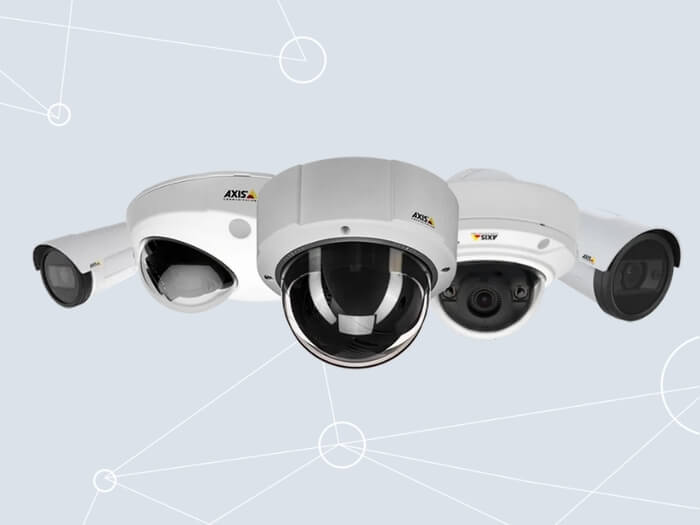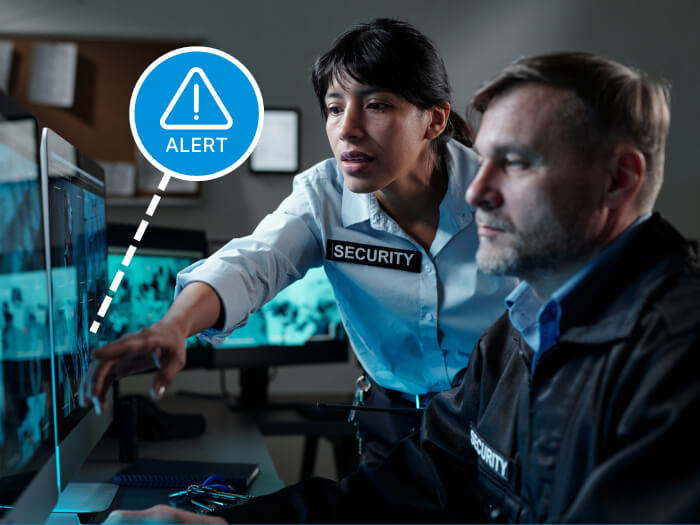
The qualities that make a particular video surveillance system – and video surveillance itself – attractive to a large bank or credit union are just as valuable to a smaller institution. These days, large institutions are looking for future-facing features as well as business efficiencies in every aspect of their technology, and can afford to invest in building out surveillance systems that provide them.
Good news for smaller banks and credit unions: the advantages that larger banks have in total budget don’t mean you can’t get the same kind of power in your surveillance system.
What big banks need, and why
Like any large business, national banking institutions have a lot of moving parts. Not only in physical plant, but in business operations, it’s a fast-changing and geographically spread-out industry. The number of branches and ATMs it takes for convenient consumer access makes it tough to keep track of them all, never mind dispatch IT or security teams to attend to them regularly. But they still need surveillance to help discourage crime, watch for safety issues that could bring liability, and ensure smooth business operations.

24/7 access to visual coverage across branch locations, ATMs, and back-office operations
Cameras are the single best way to get a handle on what’s going on, whether during business hours or after. But with so many locations, having an easy way to access and share footage anytime, from anywhere is a must — eliminating the need for anyone to run to the physical location..
Cybersecurity focus to keep both video streams and IT systems safe
Not only can video carry personally identifiable information (PII) that banks are obligated to protect, but cameras themselves can be used by cybercriminals as launching points for malware attacks. So big-bank level security must include measures to protect both the content of video as well as the networks to which cameras are attached.
Easy, flexible access to retained video
With potentially tens of thousands of cameras, large banks are hindered any time they need video stored on cameras themselves or easily accessible only to on-site personnel. Being able to seamlessly access cameras from across branches is a key demand. This is true for unified accessibility but also because of the tremendous volume of storage that video requires — the kind of volume which calls for the elastic scale of the cloud. And if ever-evolving regulations require changes to how or how long data is stored, cloud retention allows you to quickly pivot without upgrading cameras or on-site equipment.
Automatic event detection and object recognition
There’s more video produced by security cameras that can ever be practically watched in real time, which makes forensic search difficult, even with known event times in mind. Scrubbing through video is a tedious and error prone process. To solve this problem, modern video management systems (VMS) help security teams zero in on detected activity, and even spot specified objects, from people to packages to a certain make and color of car.
Easy remote management for minimal IT overhead
Just as important as remote access, remote management for any aspect of the system where it’s possible can save time and truck rolls. If cameras must be individually addressed or manually power cycled for firmware upgrades or security fixes, those upgrades become more expensive and less frequent.
Simple integration with existing or legacy cameras
Banking means business changes and diverse systems — but it also means accounting for prior investments. Whether because new branches have opened, or consolidation requires merging operations with existing infrastructure, no bank wants to waste the value of existing cameras, whether they’re analog cameras in an ATM or newly installed cameras for license plate recognition.
Flexible integrations with other business systems
Whether it’s building access controls for employees, parking systems to keep track of visitors by license plate number, or measures to help spot fraud and other suspicious behavior, technology integrations can put video information to work for much more than forensics. Video systems with an open API are ideal for sharing the data that can make those integrations work.
How local banks and credit unions can get big-bank power in their surveillance systems
How can smaller institutions afford to achieve the same kind of coverage, security, and control that large ones can? Thanks to the growth of the cloud, and in particular the growth of video surveillance as a service (VSaaS), institutions of any size can benefit from economies of scale that they couldn’t achieve on their own. In decades past, banks would need to build out much of their own security infrastructure, but VSaaS providers can offer the same services to all customers.
Keeping video on-site may seem safer than exposing to the world outside the walls of a particular branch. However, high-grade encryption means that it may be safer to keep your video data off-site instead, secured in a way that’s useless to thieves, where it can be stewarded by dedicated security and data retention teams. That also means your own IT team can focus on tasks specific to your own business rather than constantly reinventing the wheel.
An additional benefit: making video more useful, not just more accessible. A VSaaS provider such as Eagle Eye Networks takes on the tasks of making video searchable with AI-driven metadata, providing flexible ways to access retained video and bridging the gap between a VMS and third-party integrations which can get more value from video data.

Keeping an eye on the future
Whatever the organizational and logistical advantages of adopting a cloud-based VMS, the advance of technology might be an even stronger argument for adopting one. The explosion of AI technology shows no sign of ending, and for now the right place for most AI processing is in the cloud. But AI is only one aspect of rapid technological change in surveillance. Imagine being able to:
- Recognize known customers to admit them automatically to a secured ATM area.
- Recognize and alert staff on the arrival of an armored truck delivery.
- Share cameras with local emergency services in the event of an emergency on the premises.
- Detect overheating in a sensitive area such as an equipment closet or server room.
With today’s technologies, these aren’t just dreams — they’re capabilities.
Let’s talk about your surveillance challenges.

Since 2012, Eagle Eye Networks has provided smart cloud surveillance solutions, leveraging AI to drive natural language search, automation, and more. Eagle Eye’s camera-agnostic approach heightens security while saving money, time, and resources.
Other posts that might interest you

Why multifamily property managers should choose cameras backed by AI
Multifamily property video security challenges Multifamily properties require constant attention to maintenance, security, and personal safety — and always on tight budgets. Video surveillance has long been used to help,…
April 25, 2025
Eagle Eye Cloud VMS and Axis cameras: now even more directly connected
Axis Communications is literally the first name in IP security cameras — Axis actually invented the networked digital camera, and in 1996 released the groundbreaking Axis NetEye 200. Along with a…
April 21, 2025
AI security cameras explained (What every business owner needs to know)
Imagine walking into your security operations center and finding your team not frantically scanning dozens of screens, but instead responding strategically to precisely identified threats. This isn't science fiction —…
April 14, 2025








